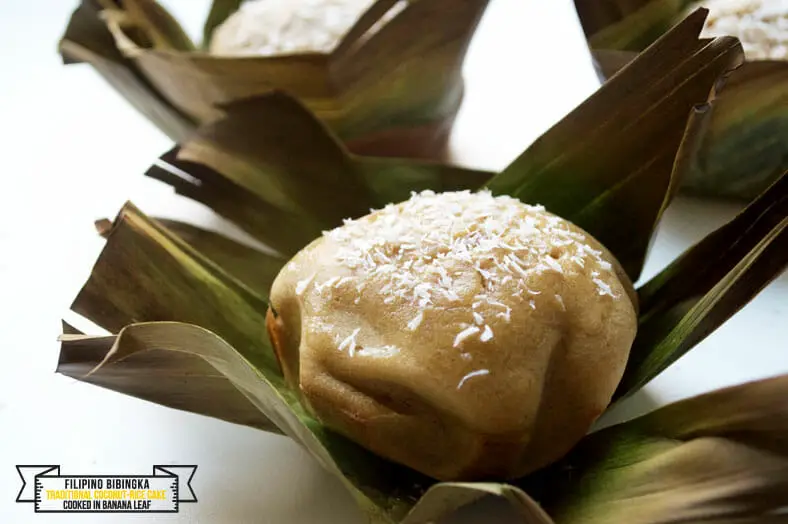This treat is naturally gluten-free, made with coconut milk and rice flour. It is basically a sweet and spongy dessert mini cake baked in a muffin tray. The Filipinos call it a “Bibingka”, and they enjoy it for breakfast or around Christmas, but for us it’s a sweet gluten-free coconutty treat!
Bibingka is a cherished spongy sweet traditionally enjoyed during the Christmas season in the Philippines.
Since the tropical climate in the Philippines means warm Christmases, bibingka is a fantastically fluffy addition to any summertime dessert menu… holiday or not!
The traditional preparation of Bibingka is a complicated and regal one. A delicate stack of coals, banana leaves and dough in a special bibingka oven combine to form this Filipino favorite.
BIBINGKA: RICE TERRACES, GOING BANANAS FOR BANANAS & HOW TO ENJOY BIBINGKA
In a land where agriculture and navigation have been deeply rooted in society for millennia, it should come as no surprise that this dessert was named among world’s most traditional holiday foods.
While Christmas has only been celebrated in the Philippines for a “mere” 500 years, the skill to grow the ingredients for bibingka has been around for at least 2,000 years.
NAUTICAL TRAVEL AND RICE TERRACES
Roughly 67,000 years ago, the first humans arrived on the islands that we now call the Philippines. However, unlike many of the great migrations in the dawn of homo sapiens, these pre-historic explorers didn’t walk to their destination.
The first humans to arrive on the Philippine islands travelled across the ocean on primitive rafts, and what adventurous souls they must have been to embark on this sea journey! There was no developed skill yet in using stone tools, yet they knew how to far the choppy waters. It’s thus fair to say that the Filipinos have maritime travel in their blood, which makes perfect sense for a country made up of nearly 18,000 islands.
But it was not only the Filipinos who travelled the region by boat. Their (relatively) close neighbors, the Chinese, the Japanese and the Malays were out and about on the open ocean trading. Rice cultivation began in China as long as 13,500 years ago, and it eventually made its way to the Philippine islands presumably on one of the many trade vessels traveling through the area.
Around 2,000 years ago, the first known rice terrace was built in the Philippines. The Banaue Rice Terraces were carved into the mountains of Ifugao 5,000 feet above sea level, and they are sometimes referred to as the eighth wonder of the world for their sheer majesty and age. So rice – and rice ground into flour – used in bibingka has been a staple in the Philippines for thousands of years.
And the adventurous spirit to try new methods of cooking? Well, that has been around since the first people landed on the shores of the Philippines nearly 70,000 years ago.

THIS CAKE IS BANANAS!
The warm, fluffy goodness of traditional bibingka would not be possible without banana leaves, which were essential to its preparation and flavor. This is the case for a lot of other Asian dishes such as Vietnam’s banh chung, which is a New Year celebratory sticky rice cake. Banana leaves has a very distinctive flavor and mildly fragrant – the Thai makes their famous orange “Thai Tea” with banana leaves.
But have you ever asked yourself how it is that banana leaves became a chef’s tool in tropical locations like these?
Before we embark on that little learning journey, allow us to blow your mind with this truly bananas factoid: bananas are berries. There, now you can wow your dinner guests with that bit of trivia.
Anyways, back to banana leaves. The wild ancestors to bananas grew throughout the broader region, but bananas were domesticated in Southeast Asia and Papua New Guinea between 5,000 and 8,000 BCE.
Before we’ve been graced with a plethora of excellent serving dishes and kitchen tools, cooks looked to nature to provide the tools needed to prepare food, and banana leaves proved to be one such effective kitchen tool.
The leaves are flexible, waterproof and large, which makes them ideal as a plate, bowl and even a cooking device. When wrapped around food and heated, the waxy texture of banana leaves locks in the flavors and juices of foods while imparting a delightfully tropical flavor of its own. They even help prevent food from burning as if they’re nature’s tinfoil!
Banana leaves are prominently used in Filipino cuisine. They are used to serve food that is laid out on a large banana leaf, and everyone eats from the common serving dish with their hands. If we’ve said it once, we’ve said it a thousand times: that’s the best way to enjoy food together.
ENJOYING RICE CAKES THE FILIPINO WAY
Christmas in the Philippines is a time filled with tradition. Catholicism was introduced to the Philippines by Spanish colonials who ruled the islands between the 1500s-1800s. While the Spanish rule ended long ago, Catholicism has remained a strong influence, and today the Philippines is the third largest Catholic country in the world.
Central to the Christmas celebration in the Philippines is Simbang Gabi, a nine day series of dawn masses. Each day’s service leads up to the last mass on Christmas Eve known as Misa de Gallo, or the “Rooster’s Mass.”
As a reward for waking before light breaks to worship, the devout are treated to bibingka prepared by street vendors conveniently located by the churches exit way. Since it is believed to bring good luck to attend all nine masses, it’s certainly possible you’d get to eat these rice cakes nine days in a row!
What a wonderful way to celebrate your faith. Wake up before the roosters, go to your house of worship, and then enjoy a steaming hot, fluffy rice cake washed down with ginger tea and hot chocolate.
Celebratory dishes that has a divine story behind it isn’t uncommon in many cultures around the world. In Afghanistan, for instance, they enjoy a dish of “haft mewa” which literally means 7 fruits – this is a dish of nuts and fruits combined with some sweetener and eaten as a dessert or a side treat.
ABOUT THE RECIPE

Preparing bibingka is an incredibly simple and effective way to peer into the styles and ways of Filipino cooking, especially when you use banana leaves.
The actual cooking of bibingka is very straightforward. To start, you’ll need to create a batter made from a base of rice flour and sugar. Start by mixing your dry ingredients into a bowl together, then gradually add in your wet ingredients of eggs and coconut milk. At first, the dough will seem fairly thick and difficult to stir – especially as the rice flour absorbs moisture – but adding in the coconut milk will solve any potential “consistency woes” you may have.
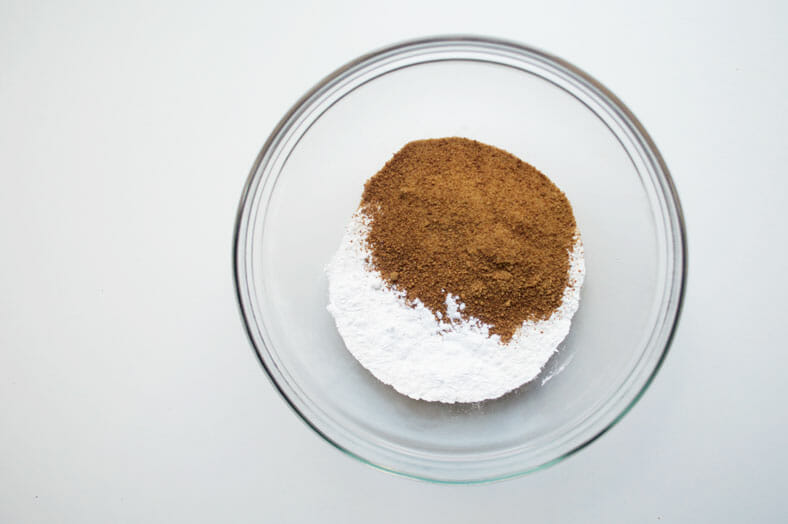
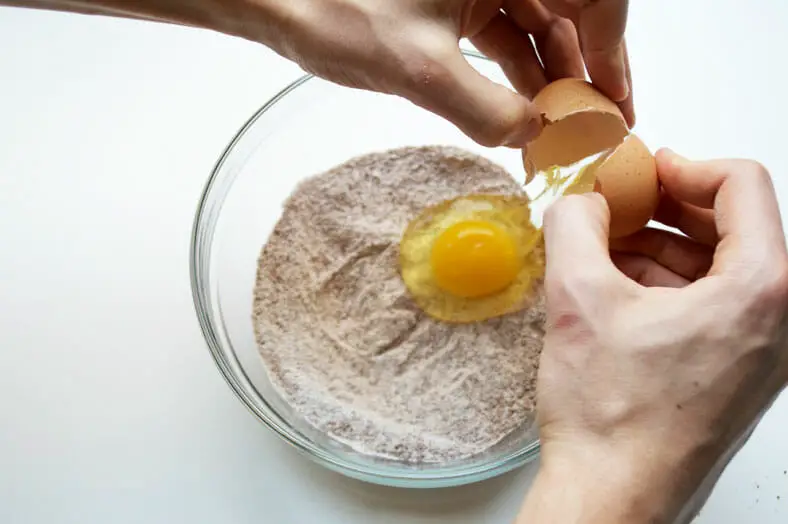
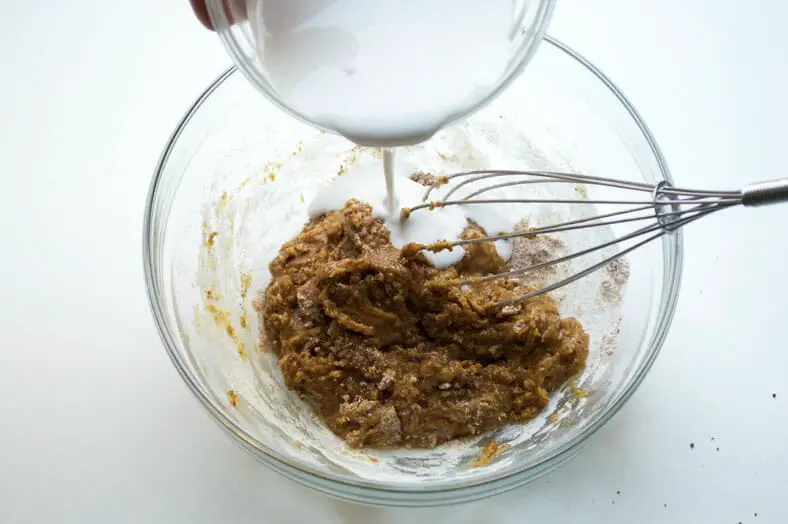
From there, the key to creating a truly yummy, fluffy texture to the dessert is to use some sort of leavening agent. You’ll see later that we took a slightly different route with ours, but most recipes will mix baking powder into the batter just before it’s time to bake. Baking powder is extremely reactive and quick acting, which makes it a great ingredient to use for bibingka. Like we said, though, we went a different route.
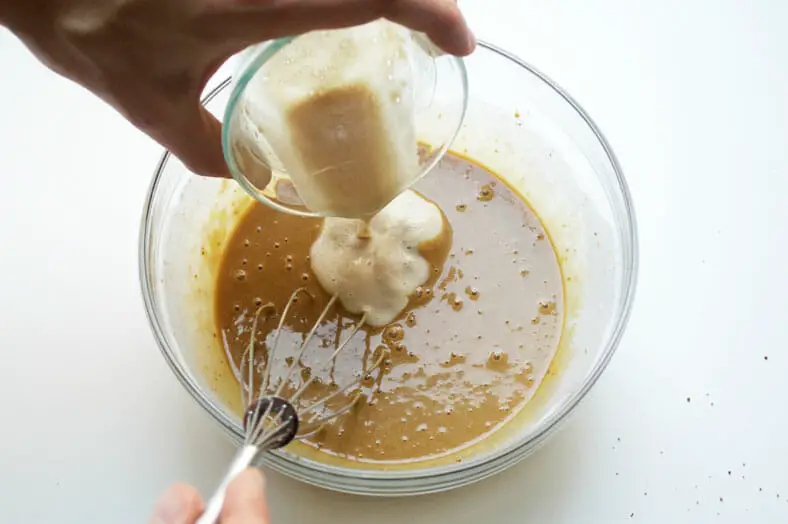
Nowadays, tools like the muffin tin have made it a lot easier to bake consistently shaped and well-contained bibingka. The traditional ways of bibingka involved pouring batter into a well-enclosed pouch of banana leaf before placing it into an Earth oven to slowly bake, but the muffin tin has given us home cooks a little more leeway.
That said, it’s still a great idea to use banana leaves in baking your bibingka instead of, say, muffin cups. There’s just something so unique and delicious about the flavors banana leaves give off, so you can get the best of both worlds by lining the divots of your muffin tin with weaved patterns of banana leaf.

Finally, pour your bibingka batter into each of your muffin cups until each is halfway full. Since the batter has a leavening agent in it, you’ll need to be mindful that the bibingka will rise to nearly double their original size, so it’s best to fill your banana leaves only halfway.

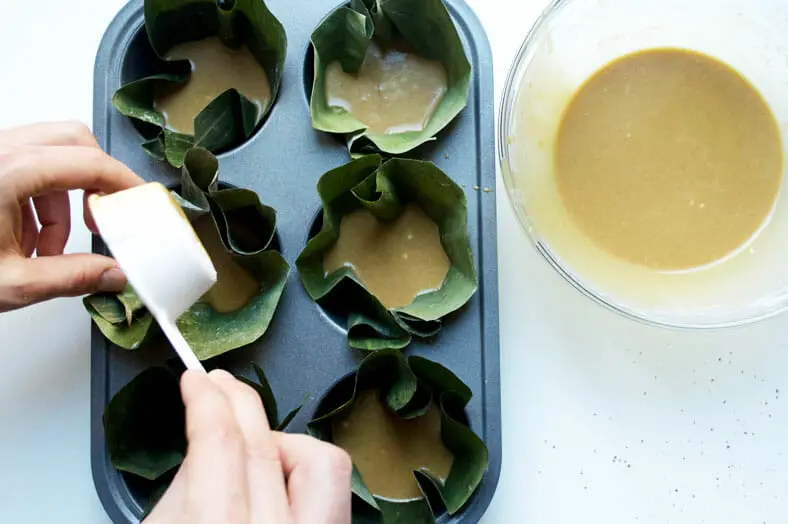
Bake your bibingka for ~30 minutes or until you can easily pass a toothpick through without pulling any uncooked batter, and you’re all done! Take them out of the oven and begin to let cool. At this point, it’s common to brush the top of your bibingka either with melted butter or leftover coconut milk and to drizzle it with dried coconut flakes. Not only does it make the end presentation look great, it makes the end flavor great as well.
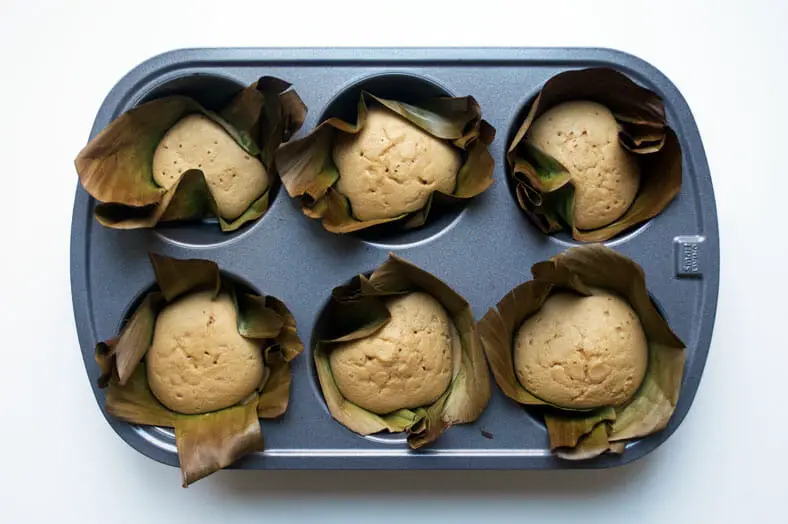
Once the bibingka has cooled off, peel off the banana leaves and enjoy every sumptuous, fluffy bite!
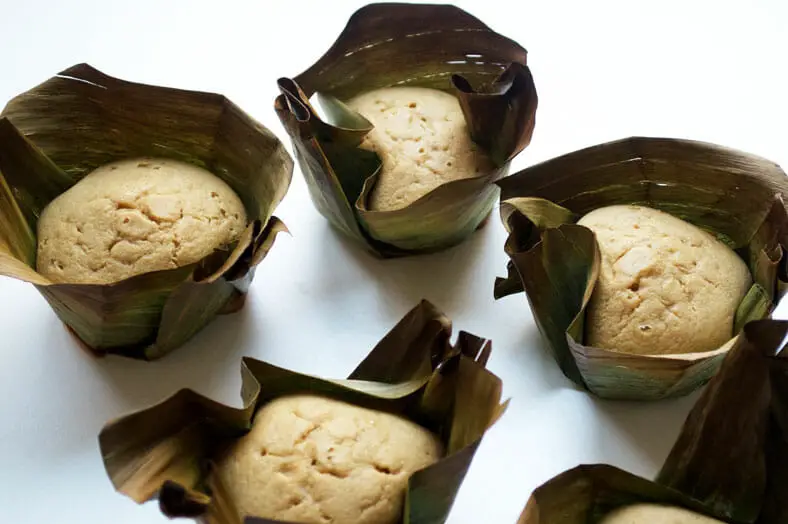
OUR TAKE ON THE RECIPE
After great success in featuring the recipe of a prominent Pinay blogger for our pochero, we sought to “continue the trend” by using the recipe of another prominent Filipina food blog as our reference for this bibingka. Still, we found a few ways in which we preferred to make some adjustments.
For starters, we made some key ingredient switches into the batter itself. We removed the milk and instead upped our amount of coconut milk used, and we swapped our granulated sugar for our preferred coconut sugar.
More radically, we didn’t use baking powder, rather we made the swap to using dry active yeast. Going off the recommendation of a trusted source in all things Filipino cooking, adding a dash of yeast (activated in warm water beforehand) has the same leavening effect on the bibingka but also lends a more “earthy” flavor to the dessert as well. For us, that combination of both yeast and coconut sugar proved to be a real winner.
Finally, we kept it fairly simple in the final garnishing of our baked bibingka. Some recipes might suggest topping it with cheese – or even salted duck egg – but we found that it lent to too much unneeded complexity to the dish. Instead, we found that brushing the tops of the cakes with coconut milk and drizzling coconut flakes over top was a tastier, more consistent way to round out the dessert. That said, you might prefer a cheese or duck egg garnish far more than we did, in which case we’d highly suggest you give it a try.
In the end, though, what counts is the deliciously fluffy rice cake itself. Bibingka is a delicious, delicately flavored tropical dessert that can really be enjoyed any time of year, but it does especially make for a unique Christmastime treat!
How would you top and prepare your bibingka? Comment below!
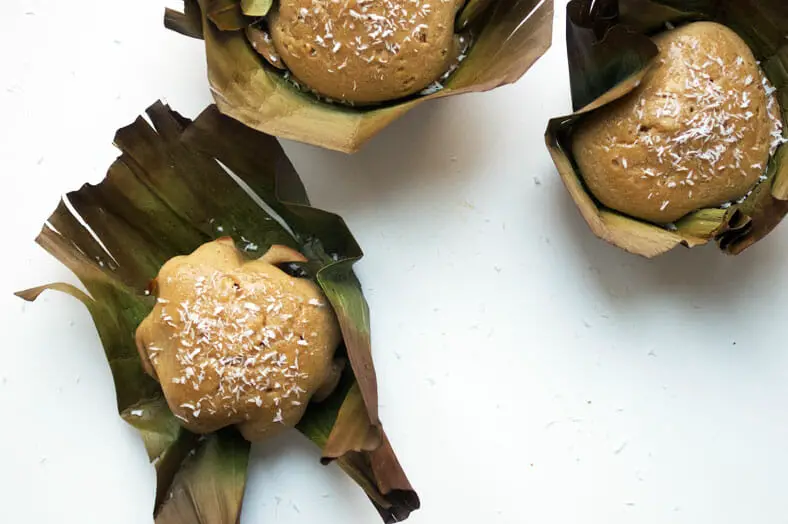
(NOTE: Want to save this recipe for later? You can take home a downloadable PDF version of this recipe by clicking here.)

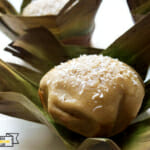
Bibingka: Filipino Rice Flour Cakes Cooked in Banana Leaves
- Total Time: 35 minutes
- Yield: 6–8 rice cakes 1x
Ingredients
- 1 cup rice flour
- 2 eggs
- 1 teaspoon dry active yeast
- 1/4 cup warm water
- 1/3 cup coconut sugar
- 1/2 cup canned coconut milk
- 1/8 teaspoon salt
- 2 tablespoons grated coconut for garnish
- 6–8 banana leaves, cut into 2 inch x 2 inch squares (optional)
Instructions
- Start by preheating your oven to 325 degrees Fahrenheit
- Take a muffin tin and place cut squares of banana leaves (or, alternatively, muffin cups) into each divot of the pan
- To create your batter, start by mixing your yeast with your warm water. Whisk lightly to make sure the yeast is well mixed in, then set aside to let it activate
- In the meantime, combine your rice flour, coconut sugar and salt into a large mixing bowl
- Next, crack your eggs and pour in your coconut milk into your mixing bowl with dry ingredients, then whisk everything together to get a semi-thick batter
- Add in your activated yeast and water, then stir everything again into what’s becoming a slightly runnier batter
- Pour your batter into each of the muffin cups, then pop your bibingka into the oven for 30 minutes
- When the bibingka is golden browned and fully cooked (meaning a toothpick can be put cleanly through), take it out of the oven. Let cool for a 1-2 minutes
- Finally, either use some leftover coconut milk or a tiny bit of water to brush and moisten the top of the bibingka. Sprinkle your grated coconut on top as garnish, and enjoy!
- Prep Time: 5 min
- Cook Time: 30 min
